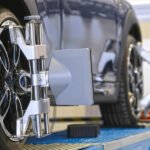

Flaws of the Nissan Juke and Why its a Bad Choice
While the Nissan Juke has gained popularity among Kenyan car buyers, it’s crucial to delve deeper into the vehicle’s flaws before jumping on the bandwagon. Despite its seemingly attractive features, this article will break down the reasons why the Nissan Juke might not be the best choice for those considering a new car.
Polarizing Design:
The Nissan Juke’s distinctive and polarizing exterior design has been a point of contention. It is a major turn-off for many. Its unconventional aesthetics might appeal to some, but for many, the Juke’s quirky styling can be off-putting. The bulbous headlights, high waistline, and pronounced wheel arches create a love-it-or-hate-it scenario.
Reliability Concerns:
The 2017 Juke has been plagued by some reliability issues, with reports of problems with the continuously variable transmission (CVT), fuel system, and electrical components. These issues can be costly to repair and could lead to headaches down the road.
Unsettled Ride Quality:
The Juke’s handling and ride quality have received criticism for being less refined compared to its competitors. The suspension setup can be uncomfortable on rough roads, and the steering may feel disconnected, reducing the overall driving experience.
Performance:
The base engine in the Juke 2017 is underpowered, making it sluggish on highways and hills. While the turbocharged engine offers better performance, it also comes with higher fuel consumption and maintenance costs.
Poor Interior:
The Nissan Juke 2017’s interior is perhaps best described as a love-it-or-hate-it affair. The circular center console, motorcycle-inspired gauges, and splashes of contrasting colors might appeal to those seeking a unique driving experience. However, for some, it can feel overdone and even childish. The plastic surfaces throughout the cabin further detract from the perceived quality, especially compared to more refined rivals. While the abundance of buttons and knobs might give a sporty feel, their placement can be confusing and frustrating.

Subpar Cargo Capacity:
The Juke’s unique exterior design doesn’t translate well to interior practicality. The cargo space is relatively small for a vehicle in its class, making it less suitable for families or those who regularly need to transport larger items. Despite its SUV classification, the Juke’s cargo space is quite limited, especially with the rear seats up. Additionally, the sloping roofline cuts into headroom in the back, making it less than ideal for taller passengers.
The Nissan Juke 2017’s interior is a mixed bag. Its quirky design might have its fans, but its lack of practicality, cramped space, and low-quality materials are undeniable drawbacks. For buyers who prioritize comfort, functionality, and value for money, there are several more compelling options available. If you’re looking for a small SUV in Kenya, there are several other options worth considering that might be a better fit for your needs and budget. Here are a few examples:
- Toyota RAV4: A reliable and fuel-efficient option with ample cargo space and comfortable ride.
- Honda HR-V: Another fuel-efficient choice with a spacious interior and user-friendly features.
- Mazda CX-3: A stylish and sporty option with good handling and a comfortable ride.
Add a comment Cancel reply
Categories
- Car Gadgets (17)
- Car News (33)
- Car Reviews (43)
- Car Wars (7)
- Mechanicals (32)
- Uncategorized (2)
Recent Posts
About us

Popular Tags
Related posts


Volkswagen Beetle: The Most Successful Car Ever

Kia Sorento 2022 Review








